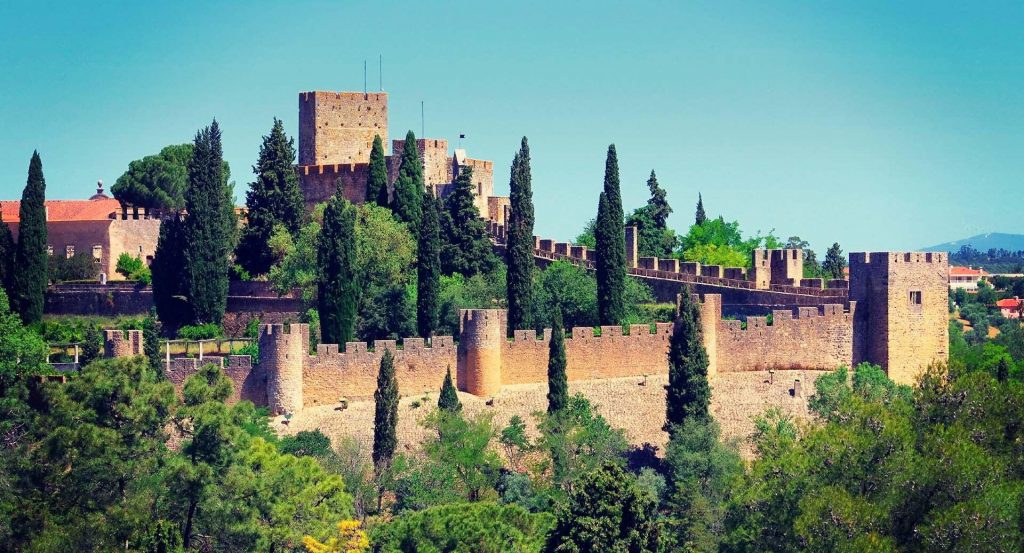
January 8 – 13, 2024
Tomar, Portugal
Final Program (Jan 4, 2024)
Know Before You Go – Important Information for Participants (Jan 4, 2024)
About This Conference
Additive Manufacturing (AM) has attracted substantial interest in recent times, promising a broad range of benefits. Of all aspects of AM, the development of new materials and the methods to make the best use of them are major priorities in this field. This is critically important because the products we rely on every day are manufactured using a huge variety of specialty materials compositions. For example, a typical polymer part may contain pigments, plasticizers, toughening agents and reinforcement. Similarly, a metallic material may contain alloying elements for improved high temperature strength, corrosion and creep resistance, and a ceramic may contain dopants providing specific optical or dielectric properties. Currently, each new composition used in AM requires a significant development effort, and additive manufacturing processes are not always able to cope with the desired range of compositions. Likewise, while we have substantial freedom to alter the size and shape of parts, we have yet to gain an equivalent level of freedom to define materials properties and (multi)functionality within those parts and to process them accordingly in a reliable and consistent fashion, and we often lack the optimization methods, software tools, process control and metrology to guarantee the desired results.
This conference will serve as a platform to bring together researchers and industrial practitioners with an interest in seeing these needs addressed in the context of AM through:
- New materials and materials development methodologies
- New ways of combining existing materials or incorporating local variations in properties
- New additive manufacturing methods that enable the translation of materials innovations into actual parts
- New developments related to design tools, process control and metrology aimed at maximizing the benefits of the aforementioned developments
The scope of the conference includes:
- Development of new polymeric, metallic, ceramic, composite and / or bio-materials for AM
- Additive manufacturing methods enabling or taking advantage of materials innovations
- Characterization and validation of new (combinations of) materials for AM
- Generation, handling and sharing of data to support development and characterization efforts
- Processing characteristics of new (combinations of) materials under AM-relevant conditions
- Optimization of AM parameters, post-processing and / or quality control approaches for new (combinations of) materials
- Relations between properties of new AM-specific materials and parts prepared from them
- Approaches to the creation and characterization of hybrid / functionally graded parts
- Materials and process issues with strong relevance to hybrid / functionally graded parts (compatibility and interfacial bonding, fracture and fatigue, thermal expansion, etc.)
- Modeling, prediction and design of part properties based on materials characteristics
- Sustainable AM considering end-of-life issues, resource recovery and materials reuse
Conference Organization
Conference Chairs
Daniel Schmidt, Luxembourg Institute of Science and Technology (LIST)
Nikhil Gupta, New York University
Eric Eastwood, KCNSC/Honeywell FM&T
Brett Compton, University of Tennessee, Knoxville
Gary Gladysz, Los Alamos National Laboratory
Steering Committee
John Bernardin, Los Alamos National Laboratory
Pedro Cortes, Youngstown State University
Eric MacDonald, University of Texas- El Paso
Prof Keng Hsu, Arizona State University
Mika Salmi, Aalto University
Christian Leinenbach, Empa
Rachel Collino, Los Alamos National Laboratory
Call for Abstracts
Abstract Submission
The scope of the conference includes:
- Preparation of new polymeric, metallic, ceramic and/or composite materials for AM
- Characterization and validation of new (combinations of) materials for AM
- Processing characteristics of new (combinations of) materials under AM-relevant conditions
- Optimization of AM parameters for new (combinations of) materials
- Relations between properties of new AM-specific materials and parts prepared from them
- Approaches to the creation and characterization of hybrid / functionally graded parts
- Materials and process issues with strong relevance to hybrid / functionally graded parts (compatibility and interfacial bonding, fracture and fatigue, thermal expansion, etc.)
- Modeling, prediction and design of part properties based on materials characteristics
- Sustainable AM considering end-of-life issues, resource recovery and materials reuse
Please use these descriptions to pre-select up to two sessions where you believe your work fits best.
Abstracts (one page maximum) that include specific results and conclusions to allow a scientific assessment of the proposed oral presentation are invited. Please prepared your abstract according to this template: docx or doc.
Abstracts must be submitted electronically using the template provided at THIS LINK.
Oral abstract submission deadline: October 2, 2023
Poster abstract submission deadline: October 2, 2023
Abstracts of all presentations will be made available to conference participants prior to the start of the conference.
Note: Only a limited number of oral presentation slots are available and thus all submissions for oral sessions will be considered for both oral and poster presentation.
Awards will be presented to the top non-student poster as well as the top student poster.
Conference Fees and Registration
Conference Fees
The conference fee includes the following: conference registration, accommodations (nights of Monday (January 8), Tuesday (January 9), Wednesday (January 10), Thursday (January 11), and Friday (January 12); check-out on Saturday (January 13)), five breakfasts, five lunches, four dinners, and coffee breaks and snacks, and the guided walking excursion to the Convento de Cristo. Dinner on Wednesday after the excursion is on your own. Incidental fees (laundry, minibar etc.) are billed to your personal account by the hotel.
ALL PARTICIPANTS (INCLUDING MEMBERS OF THE ORGANIZING COMMITTEE AND INVITED SPEAKERS) ARE REQUIRED TO REGISTER.
The conference fees are:
| Register |
Register December 4, 2023 | |
| Participant (single occupancy or sharing room with a guest; guest fee additional) | US $2,130 | US $2,380 |
| Participant (sharing a room with another participant) | US $1,950 | US $2,200 |
| Bona fide Graduate Student (sharing a room with another student) (Those in this category must upload proof of current status during registration – copy of current Student ID or a letter from your University confirming your student status) | US $1,535 | U $1,785 |
| Bona fide Graduate Student (single occupancy or sharing room with a guest; guest fee additional) (Those in this category must upload proof of current status during registration – copy of current Student ID or a letter from your University confirming your student status) | US $1,715 | US $1,965 |
|
**Fees for Guest/accompanying
person sharing bedroom with a participant. (Includes all conference included
meals and excursion) | US $775 | US $775 |
|
**Fees for Guest/accompanying
person sharing bedroom with a participant. (Bed & Breakfast ONLY, NO
meals and excursion) | US $85 | US $85 |
If you plan to bring children to the conference, please contact Kathy Chan for pricing.
Conference Registration
You will need a login name and password to register for ECI conferences through our online system. If you have been a recent participant at an ECI conference or have submitted an online application or request for information about an ECI Conference, you may already have an account with us. If you know your login information, please use it.
If you are not sure whether you already have a login and password, please click on automated password retrieval and enter your e-mail address before creating a new account. If we don’t have a valid email address on file for you, a pop-up window will appear stating that no records were found. Click “OK” and then follow the instructions to create a new account. If you have any questions or experience any difficulties, please email Kathy Chan.
Special Notes and Payment Instructions
We suggest that you register as soon as possible to be certain that you will have a hotel room at the conference rate.
All
participants are encouraged to register before December 4, 2023. There is a discounted price for
registering before this date. Hotel space cannot be guaranteed for
registrations received after December 4, 2023. Your registration is not officially confirmed until we receive
payment of the amount due. ECI
reserves the right to cancel your room registration if payment is not received.
Your invoice/receipt will automatically be e-mailed upon of receipt of your
registration. Should you need a signed receipt or a certificate of
attendance (sent after the conclusion of the conference), please contact Kathy
Chan.
Because of contractual guarantees made with the hotel for room and meal functions, no shows, late arrivals, missed meals and early departures cannot receive fee adjustments. If you have a disability and may require accommodation in order to participate fully in this conference, please indicate this when you register. An ECI representative will contact you to discuss your specific needs. If you have special dietary requirements (e.g., vegetarian or a food allergy), please make a note on your registration. The chef needs to know this information in advance if we are to accommodate you. ECI will attempt to accommodate special requests such as Kosher or Halal meals, but such meals may not be available at all conference sites. The participant must pay any additional costs for special meal requests that ECI pays a surcharge for.
Payment must be made by credit card (Visa, MasterCard, and Amex), check or money order drawn on a U.S. bank in U.S. dollars, payable to ENGINEERING CONFERENCES INTERNATIONAL. Checks or money orders in any other currencies are NOT ACCEPTABLE. Payment must be made on the web site except for those who are sending payment by wire transfer or have a purchase order from their company/institution.
WIRE TRANSFER PAYMENT: If you are planning to make payment by wire transfer, please contact Kathy Chan for the bank information. You must add $30 to cover ECI bank charges. Please reference your full name and the conference title. Please email a scanned copy to Kathy Chan. This is very important – otherwise it is extremely difficult to trace your payment and you may not receive a receipt prior to the conference.
Cancellation Policy: Cancellation must be received by ECI in writing at least 28 days prior to the start of the conference in order for a full refund (less a processing fee) to be considered. The ECI auditors require that refunds for all conference cancellations be processed after the conference so that the necessary back-up information (e.g., hotel list of those in-house) can be attached to the refund request and ECI can verify that the hotel has not charged a cancellation fee.
Cancellation fees:
- Cancellations received more than 28 days prior to the conference start date are subject to a processing fee of 4% of the total fee, plus any direct expenses incurred by ECI.
- Cancellations received 15 – 28 days prior to the conference start date are subject to a $250 cancellation fee plus any direct expenses incurred by ECI.
- Cancellations received 8 – 14 days prior to the conference start date are subject to a $500 cancellation fee plus any direct expenses incurred by ECI.
- No refunds will be issued for cancellations received less than 7 days prior to the conference start date.
- No refunds will be issued due to inclement weather or travel disruptions/cancellations.
Registrations may be transferred without incurring any penalty or cancellation fee.
Denied or delayed visa
If a participant is forced to cancel due to a denied or delayed entry visa, ECI will issue a full refund if ECI has been notified of a potential visa issue at least four weeks prior to the conference start date.
Change of payment method
If an attendee who has already paid the conference fee with a credit card requests that the fee be refunded to that card so that it can be paid in a different manner (e.g., charged to an alternate credit card, or paid via check or bank transfer), a processing fee of 4% of the total fee amount will apply.
Disclaimer
It may be necessary for reasons beyond the control of ECI to alter the content and timing of the program or the identity of the speakers. In the unfortunate circumstance that an event is cancelled, ECI is not liable for any costs incurred by participants in connection with their attendance.
Smoking is prohibited at ECI conferences and conference functions.
Should you have specific questions regarding your registration, please contact Kathy Chan. The Engineering Conferences International conferences calendar and other information can be found on the ECI web site: www.engconfintl.org
Venue Information
Tomar, Portugal
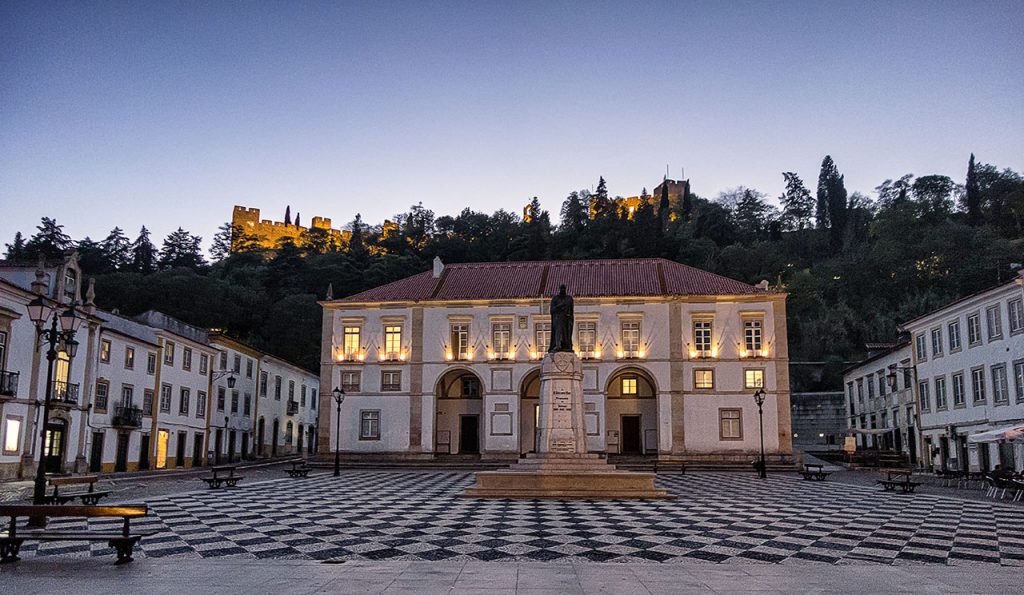
Situated in the geographic center of Portugal, Tomar (about 135 km northeast of Lisbon) was founded by the notorious Knights Templar in 1160. The Templars were part monks, part warriors and plotted crusades from Tomar for centuries. They established the beginnings of the Convento de Cristo, Tomar’s most famous landmark, on a hill overlooking town. The Convento combines architectural styles from the 12th through 17th centuries. An ornate octagonal canopy protects the high altar of the Templo dos Templares, modeled after the Holy Sepulchre in Jerusalem, and the grounds of the convent contain eight cloisters embracing a variety of styles.
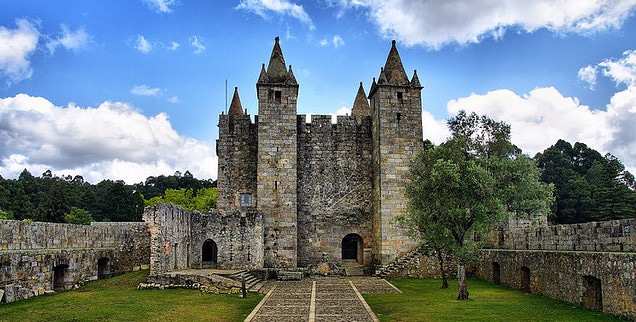
The Templars earned a reputation as ferocious fighters, and won the admiration and trust of both rich and poor. They served as protectors and transporters of Christian kings, power brokers and pilgrims and grew famous as bankers. The Templars acquired great wealth, but made many enemies in the process. Pope Clement V accepted accusations of heresy, blasphemy and sacrilege leveled against the Templars by Philip the Fair, king of France, and many Templars were imprisoned or executed. King Dinis of Portugal allowed them to regroup their forces under the new aegis of the Order of Christ. Prince Henry the Navigator became Administrator after the Templars became the Order of Christ and he used much their wealth to finance his explorations.
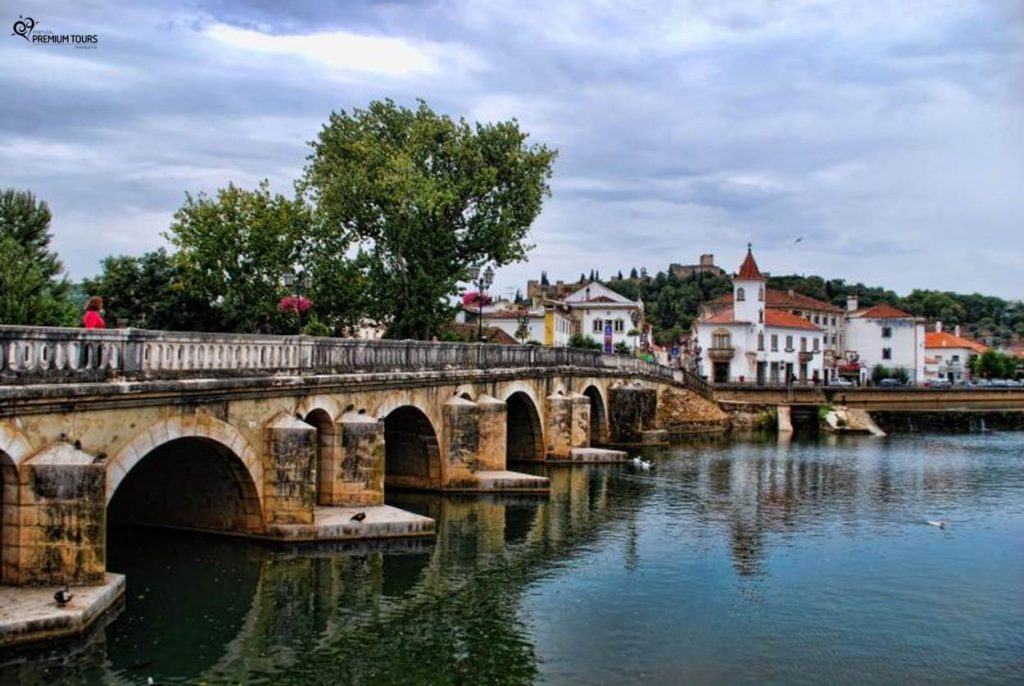
Tomar is divided by the River Nabão, the banks of which are dotted with weirs and wheels once used to water vegetable gardens and orchards. The irrigation techniques illustrate the Muslim tradition of hydraulic engineering. Most sights, accommodations and shops lie on the west bank of the river and the lush Parque Mouchão straddles the two banks. The ancient yet functional Ponte Velha (Old Bridge) connects the two. Tomar’s main shopping thoroughfare is rua Serpa Pinto, known locally as Corre Doura. Outlets for folklore, pottery, copperware and wrought iron highlight it. Tascas and bars are scattered throughout the city, with some offering live music.
Hotel dos Templários
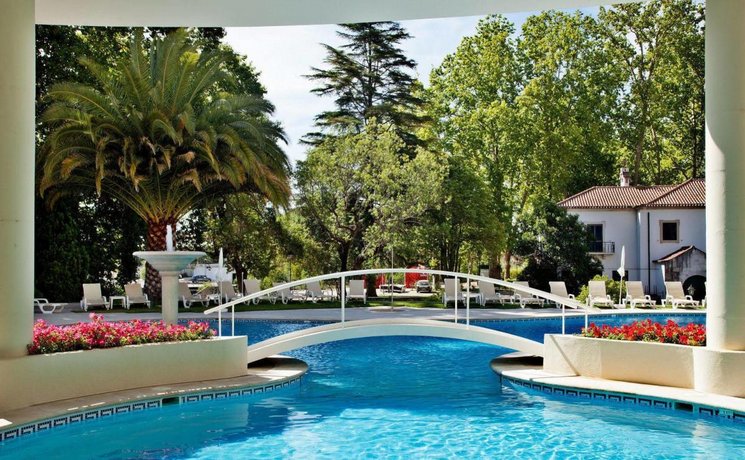
Situated near the heart of Tomar’s Old Town, the Hotel dos Templários is the largest hotel in the district. Many rooms offer views of the Convent of Christ and the public areas, including lounges and terrace-view dining rooms, are spacious. The hotel offers room service, laundry, a barbershop, a beauty parlor, a billiards room and baby-sitting. There are wide sun terraces, indoor and outdoor pools, a tennis court and a greenhouse. The hotel also has large gardens. Rooms have air conditioning, private bathrooms, televisions and minibars. Free parking is available.
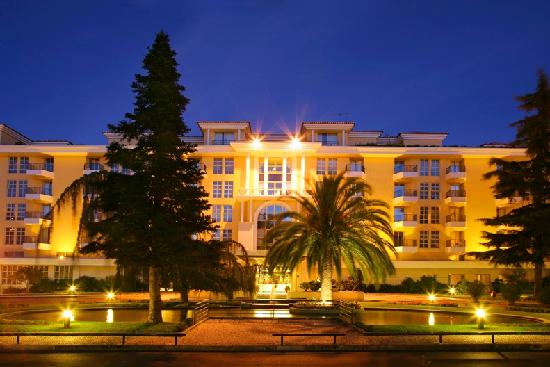
For more information on the area, please visit these web sites:
http://www.golisbon.com/portugal/cities/tomar.html
http://www.sacred-destinations.com/portugal/tomar.htm
www.ezportugal.com/tomar-portugal
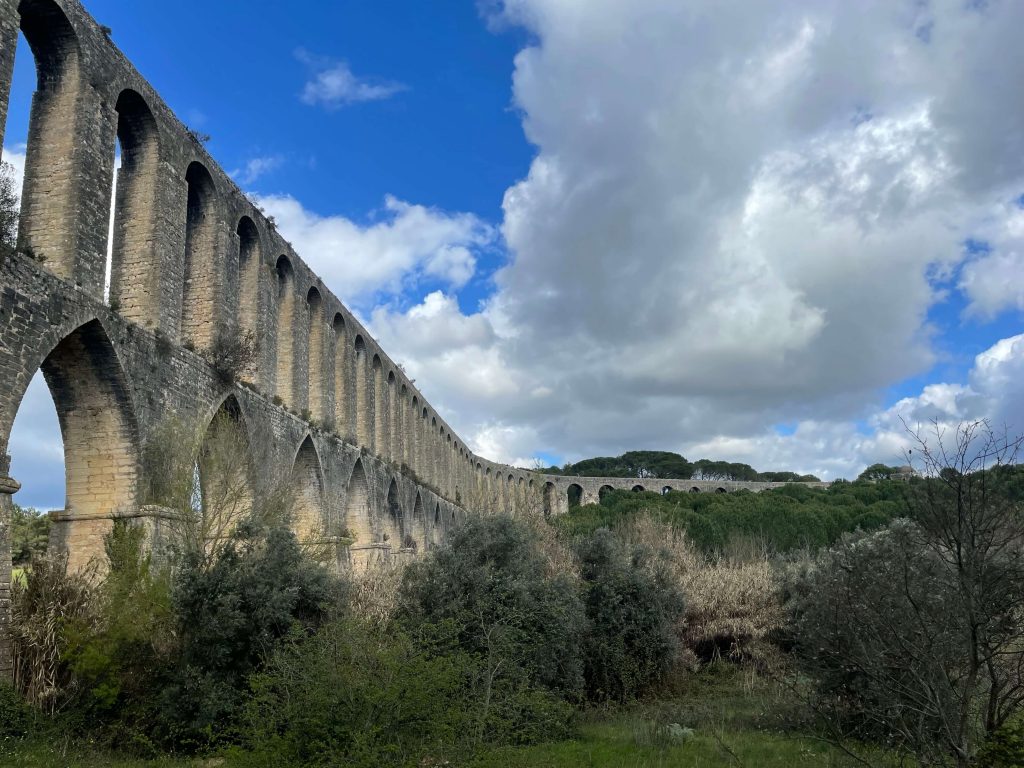
Pre and Post Conference Reservation Form
If you are arriving early or staying after the conference and wish to extend your stay in the conference hotel, please download and complete the Pre/Post Conference Reservation form posted below and send it directly to the conference hotel. ECI does not guarantee or pay for rooms reserved before or after the conference – you must reserve extra nights directly with the hotel and you are responsible for paying the hotel directly for any extra nights.
Sponsorship Opportunities
General Information About ECI
Engineering Conferences International (ECI) is a not-for-profit, global engineering conferences program, originally established in 1962 that provides opportunities for the exploration of problems and issues of concern to engineers and scientists from many disciplines.
The format of the conference provides morning and late afternoon or evening sessions in which major presentations are made. Poster sessions will be scheduled for evening discussion as well. Available time is included during the afternoons for ad hoc meetings, informal discussions, and/or recreation. This format is designed to enhance rapport among participants and promote dialogue on the development of the meeting. We believe the conferences have been instrumental in generating ideas and disseminating information to a greater extent than is possible through more conventional forums.
All participants are expected both to attend the entire conference and to contribute actively to the discussions. The recording/photographing of lectures and presentations is forbidden. As ECI conferences take place in an informal atmosphere, casual clothing is the usual attire.
Smoking is prohibited at ECI conferences and conference functions.

